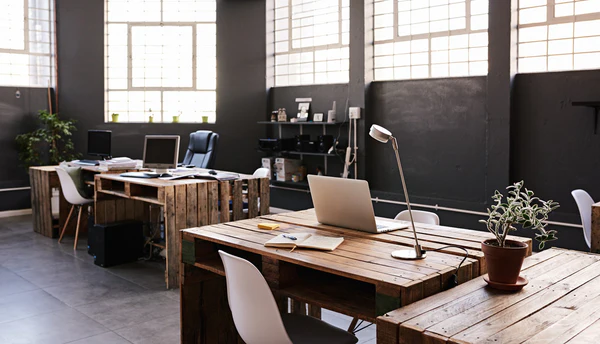Creating an inspiring and functional workspace is key to boosting productivity and employee satisfaction. The right office furniture not only enhances the aesthetic appeal of your office but also supports your team in achieving their best work. In this guide, we’ll explore essential considerations and tips for choosing office furniture that fits your needs and style.
1. Assess Your Needs
Before diving into furniture options, it’s crucial to assess your office’s needs. Consider the following:
- Workspace Layout: How is your office space arranged? Open plan, cubicles, or private offices each have different requirements.
- Employee Roles: Different roles might need different types of furniture. For instance, a designer may require a large desk and adjustable chair, while an accountant might benefit from a more compact setup.
- Technology Integration: Ensure your furniture accommodates necessary technology like computers, printers, and charging stations.
2. Ergonomics and Comfort
Investing in ergonomic furniture can prevent discomfort and health issues. Look for:
- Adjustable Chairs: Chairs with adjustable height, lumbar support, and armrests can reduce strain.
- Desks with Proper Height: Ensure desks are at a comfortable height for typing and other tasks.
- Anti-Fatigue Mats: For standing desks, these mats can make standing more comfortable.
3. Style and Design
Your office furniture should align with your brand’s image and the atmosphere you want to create. Consider:
- Color Scheme: Choose colors that reflect your brand or create the desired ambiance. Neutral colors often work well for a professional setting, while bright colors can add energy to creative spaces.
- Design Aesthetics: Modern, minimalist designs might suit tech startups, while traditional wood furniture could fit a more conservative industry.
4. Quality and Durability
Office furniture is an investment, so prioritize quality. Look for:
- Sturdy Materials: High-quality materials like solid wood, metal, or durable composites ensure longevity.
- Brand Reputation: Opt for brands known for their reliability and customer service.
5. Flexibility and Modularity
Flexible furniture solutions can adapt to changing needs. Consider:
- Modular Furniture: Modular desks and seating can be reconfigured as your team grows or your needs change.
- Multi-Functional Pieces: Furniture that serves multiple purposes, like a desk with built-in storage, can maximize space efficiency.
6. Budget Considerations
While quality is important, it’s also crucial to stay within budget. Look for:
- Value for Money: Balance quality with cost. Sometimes, spending a bit more upfront can save money in the long run if the furniture lasts longer.
- Sales and Discounts: Take advantage of sales, bulk purchase discounts, and financing options.
7. Sustainability
Choosing eco-friendly furniture can enhance your company’s green credentials. Look for:
- Sustainable Materials: Furniture made from recycled or sustainably sourced materials.
- Certifications: Look for certifications like GREENGUARD or FSC to ensure environmental responsibility.
8. Delivery and Assembly
Finally, consider the logistics:
- Delivery Time: Ensure the furniture arrives on time to avoid disrupting your office setup.
- Assembly Services: Some suppliers offer assembly services, which can save time and hassle.
Conclusion
Selecting the right office furniture involves a mix of practicality, style, and budget considerations. By assessing your needs, focusing on ergonomics, and investing in quality, you can create a workspace that is both functional and inspiring. Remember, your office furniture is not just about filling space; it’s about creating an environment where your team can thrive and succeed.



